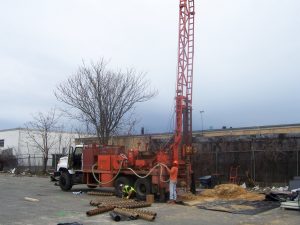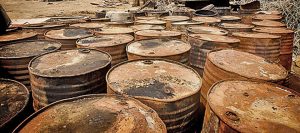Why is an Environmental Feasibility Study Important in Superfund Project Management?
Why is an Environmental Feasibility Study Important in Superfund Project Management?
An Environmental Feasibility Study (FS) is a comparative process used to determine the best choice for remediation of a contaminated property, such as a listed inactive hazardous waste disposal site or Superfund project site, in New York State. An FS is used to develop and evaluate remedial alternatives against specific criteria and is used to streamline the process of reaching remedial objectives for site cleanup, while also making efficient use of time and money spent.
Gives Owners and Operators the Opportunity to Participate in Decision Making
If you own a property or operate a facility that becomes a listed site in a remedial program in New York State, you may be designated a “responsible party.” This means that the New York State Department of Environmental Conservation (NYSDEC) or United States Environmental Protection Agency (USEPA) will be looking to you for implementation, or otherwise funding, of the remedial project. Wherever possible, the regulatory agencies and responsible parties work together to come to reasonable solutions. Your participation in the remedial project, and specifically, FS, gives you the opportunity to have a say and negotiate in the decision making process. This is important because the eventual remedial action plan (RAP) will affect you directly, especially when it comes to site operations and remedial costs.
No Remedy is “One Size Fits All”
An FS allows for the development of a range of viable alternatives that meet the project objectives. Each potential remedy considered is screened to make sure it is technically feasible for the site. Site specific conditions vary and may cause the outcome of a particular remedy to differ from its usefulness at another site. Depending on the nature and extent of contamination present at the site, and whether there are soil, groundwater, surface water, perched water, soil gas, building sub-slab and/or indoor air impacts, etc., various remedies may be considered, even in combination. Other site specific conditions, such as subsurface geology, the depth and horizontal extent of contamination, the depth to groundwater and groundwater chemistry, also play a role in selection of a site remedy or remedies.
Considers if Time and Cost are Reasonable
The estimated time for a potential remedy to meet the established Remedial Action Objectives (RAOs) and goals along with its associated cost, is also considered in what is called a cost benefit analysis. The cost to clean up inactive hazardous waste or Superfund sites can be extensive, and so can the time it takes to reach RAOs and goals. For this reason, a “no action” response is often looked at to predict what may happen if nothing was done compared to other remedial alternatives. If it is determined that the cost and effectiveness of more aggressive and costly remedial alternatives do not result in a significant positive outcome compared to “no action,” the FS process eliminates alternatives less likely to produce desired results.
Need Help or Additional Information?
If you are entering into NYSDEC or USEPA remedial program or would like more information on the remedial process for these programs, feel free to contact Walden Environmental Engineering for a free consultation.


